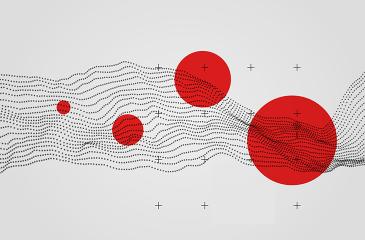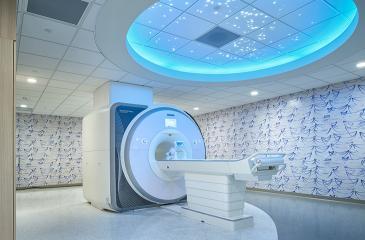MIDB Researchers Help Create Reference Model for Brain Growth Over Human Lifespan
“BrainChart” platform is an interactive open resource that benchmarks brain development based on brain images, creating a reference chart like those for height and weight.
An international team including researchers from the Masonic Institute for the Developing Brain (MIDB) at the University of Minnesota have created a new tool that benchmarks brain development over the human lifespan, based on magnetic resonance imaging (MRI) data from more than 100,000 individuals. Described in Nature, the interactive open resource, known as BrainChart, harmonizes brain images in a way that will allow researchers to measure brain development against reference charts like those used for evaluating children’s height and weight.
"This work has the potential to bring brain development to the pediatrician’s office in the same way growth charts have assisted in our care for decades,” said co-author Damien Fair, PA-C, PhD, Redleaf Endowed Director for the MIDB. “It is an amazing effort that will have a lasting impact on the characterization of brain changes across the lifespan."
Growth charts that track age-related changes are a cornerstone of pediatric health care, but they only exist for height, weight, and head circumference for the first decade of life. The researchers recognized a need for tools that would allow for a systematic evaluation of brain development and aging, given that experts have learned that many psychiatric disorders are the result of atypical brain development. Neurodegenerative diseases like Alzheimer’s and Parkinson’s Disease also cause observable changes in the brain, and developmental genetic disorders lead to structural brain abnormalities. Given that mental illness and dementia collectively represent the single biggest global health burden, the researchers saw a need for a standardized chart that would serve as a benchmark for brain structure over the human lifespan.
To create the BrainChart platform, the researchers aggregated the largest neuroimaging dataset to date, consisting of 123,984 MRI scans from 101,457 participants ranging in age from 115 days after conception to 100 years old, drawn from more than 100 primary research studies. The researchers analyzed tissue volumes and other MRI metrics and applied centile scores and rates of change over the lifespan. By doing so, the paper identified previously unreported neurodevelopmental milestones, including an early growth period that starts around 17 weeks after conception, when the brain is 10% its maximum size, until 3 years of age, when the brain is approximately 80% its maximum size. The researchers also demonstrated that their centile scores, an important benchmark of any growth chart, were stable over time for individual assessments.
Importantly, by using a statistical framework that accounted for MRI data coming from different sources, times, and clinical conditions, the researchers were able to harmonize the data on a single platform, creating a common language that could be used to understand brain images from different sources. By standardizing the images in the dataset, all of which were acquired through prior research studies, the researchers also laid the groundwork for adding images acquired through routine scans in the clinic.
The researchers noted that although BrainChart could someday be useful in clinical settings, more research is needed to validate and refine the model so that it could be useful in diagnosing brain-related conditions. The immediate use is more likely to apply to researchers, who now have a resource that can provide a benchmark against which they can apply their own findings. Additionally, the research team emphasized that brain charts must be representative of the whole population, pointing to the need for more brain MRI data on previously under-represented socio-economic and ethnic groups.
In addition to Fair, other University of Minnesota researchers involved in the study include Jed Elison, PhD, associate professor at the Institute of Child Development in the College of Education and Human Development, and Eric Feczko, PhD, MBI, assistant professor of Pediatrics.



